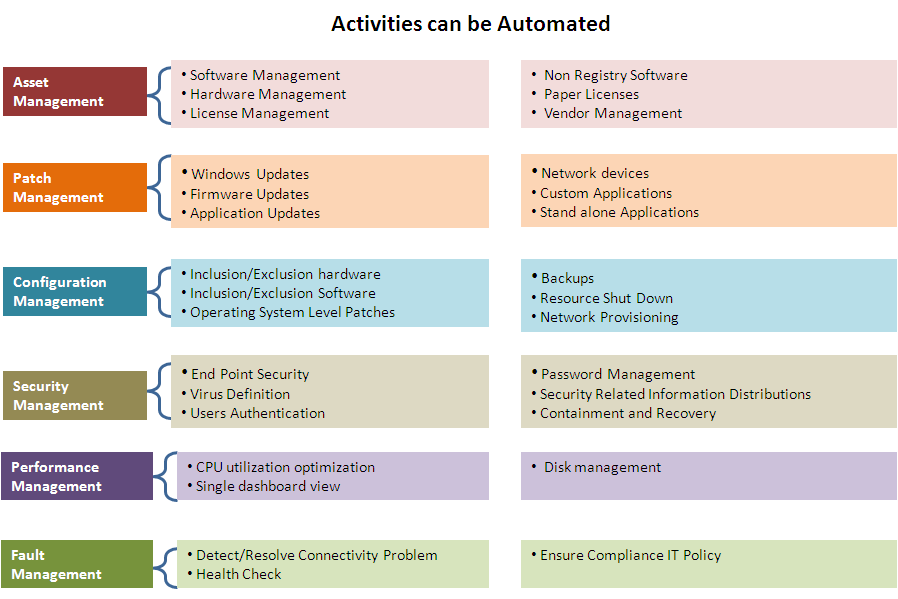Today, Enterprise CIOs are influenced by trends like BYOD (Bring Your Own Device), Mobile Device Management, SMAC, Network as a Service and Cloud. While they are interested in understanding and adapting certain trends, the real challenge for them is to balance faster market conditions with the limited budget. So they are left with only two options:
a) Spend big
b) Prepare a conservative budget with minor technology advancements
But do they know that they can play so much with their existing budget and manage IT Infrastructure in an efficient manner? Well, what I am going discuss now is not only the answer for the above-mentioned question, but the direction in which Today’s Enterprises are moving – “IT Infrastructure Support Automation”.
I recently attended NASSCOM’s “IT Infrastructure Management Summit 2013” and I was impressed by a presentation where the presenter presented elaborately on “Support Automation” and rightfully it reflected on what I had it in my mind – “End-User Support Automation” and my philosophy – “Automate 80:20”. As we all know, End-users productivity remains one of the major key factors for any IT organization and it is very clear to me that End-User support should be more responsive than ever before. Gartner research says “Password problems make up 20 % to 30 % of all IT service desk volume, with most of those issues resolvable by tools. Automating this function can save organizations the costs of supporting this type of request” and to me, End-User support automation is the primary area for any IT Infrastructure Heads to effectively implement “Support Automation”.
In recent times, Enterprises have started automating the IT Infrastructure support activities to increase their end-user productivity and minimize IT cost by reducing technical resources. There are various End-User management tools available in the market and those tools can effectively automate 80% of Enterprise’s manual support activities. Obliviously tool is just one factor and there are other factors like stabilized process and effective Knowledge Management Database (KMDB). But what is important is the awareness part and that remains unnoticed among many of the IT Infrastructure Heads. So, I believe it’s high time that every Enterprise CIOs should think about this – “80% of the support activities can be automated with the minimal CAPEX and rest 20% can be manually managed with the reduced OPEX”.
Let us now look at a few areas below in which you can effectively implement End-User Support Automation and in my next blog, I will cover the 3 important pillars of End-User support automation 1) Tool 2) Process 3) Knowledge. Meanwhile, I would appreciate your inputs and thoughts on my philosophy– “Automate 80:20”






